Posts Tagged: carpenter bees
Bugs and Bees, Bees and Bugs
Bugs and bees. Bees and bugs. That's what's on the menu--or that's what's buzzing--over the next few weeks in the Davis/Berkeley area. Bugs....
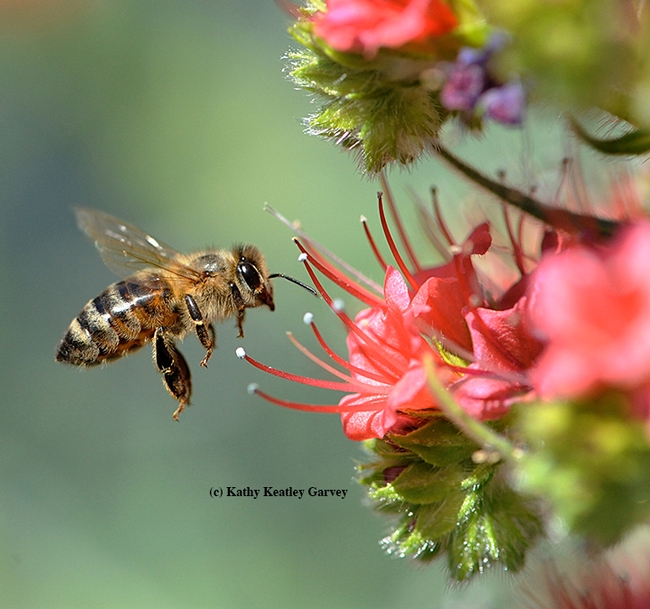
A honey bee heading toward a tower of jewels, Echium wildpretii, in Vacaville, Calif. (Photo by Kathy Keatley Garvey)
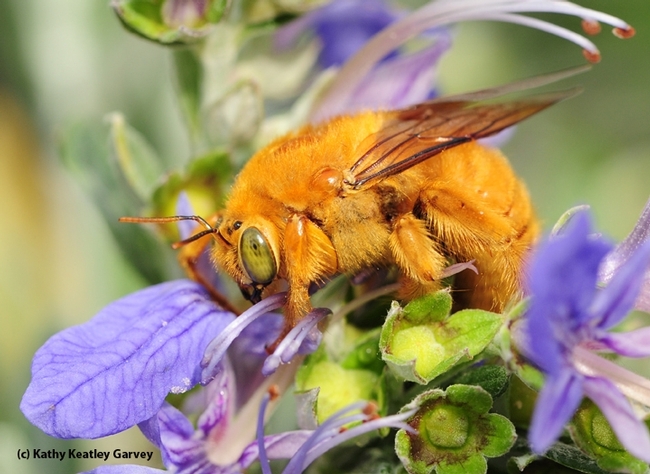
A male Valley carpenter bee, Xylocopa varipuncta, nectaring on germander, Teucrium chamaedrys. (Photo by Kathy Keatley Garvey)
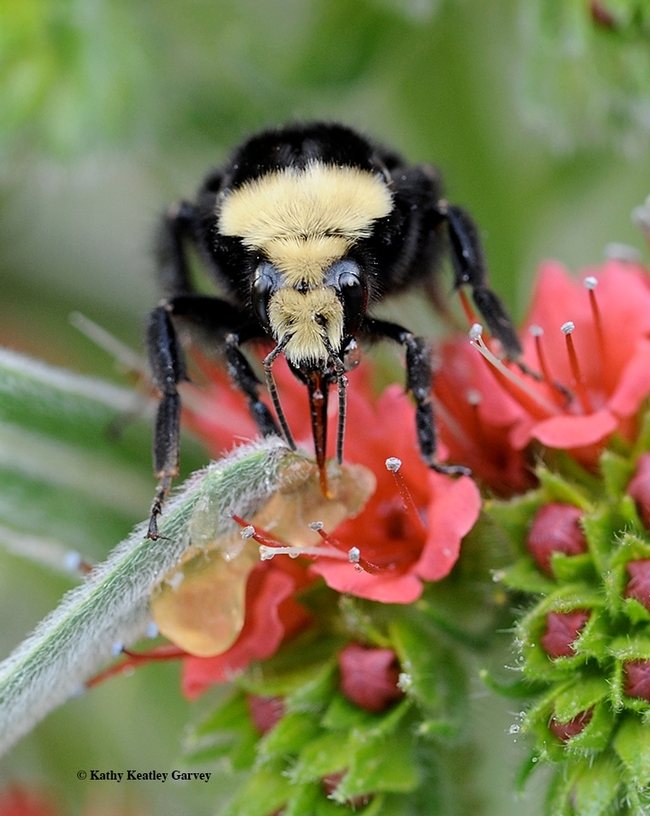
A yellow-faced bumble bee, Bombus vosnesenskii, foraging on the tower of jewels, Echium wildpretii, in Vacaville, Calif. (Photo by Kathy Keatley Garvey)
Salivating Over Salvia? Premiere Plant Sale at UC Davis Arboretum on Saturday, April 6
Salivating over salvia? You can see, salivate--and purchase--salvias and more at the spring premiere plant sale sponsored by the UC Davis Arboretum...
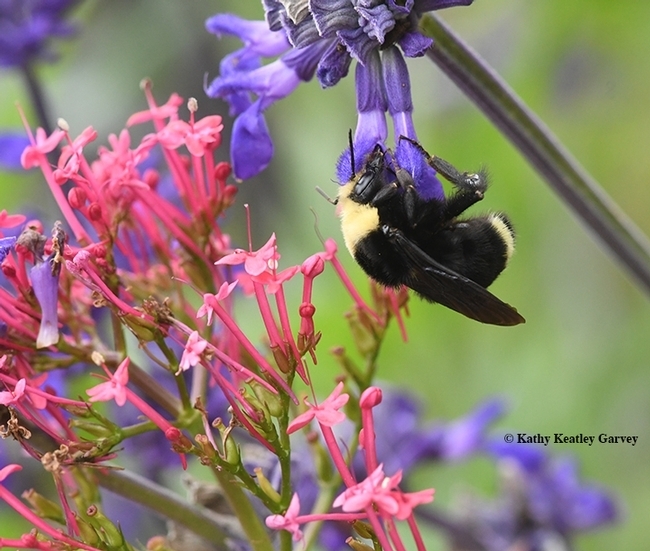
A yellow-faced bumble bee, Bombus vosnesenskii, nectars on a spiked floral purple plant, Salvia indigo spires (Salvia farinacea x S. farinacea) at the Kate Frey Pollinator Garden at the Sonoma Cornerstone. (Photo by Kathy Keatley Garvey)
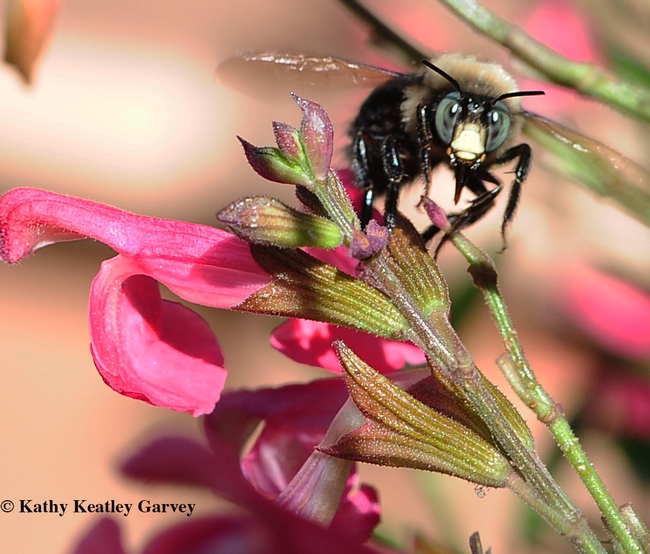
bugsquadcarpenterbee
This BOG in the Heart of UC Davis Is a Treasure
"A bog is a wetland that accumulates peat, a deposit of dead plant material—often mosses, and in a majority of cases, sphagnum...
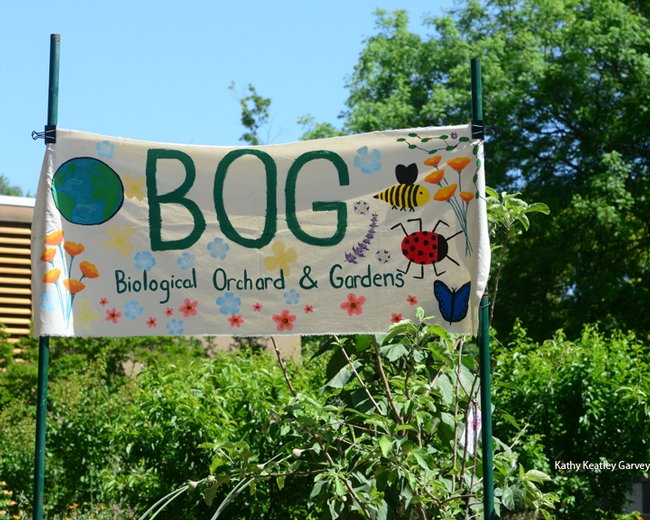
The Biological Orchard and Gardens (BOG) sign features floral and insect designs. It's located by the Mann Laboratory, UC Davis campus. (Photo by Kathy Keatley Garvey)
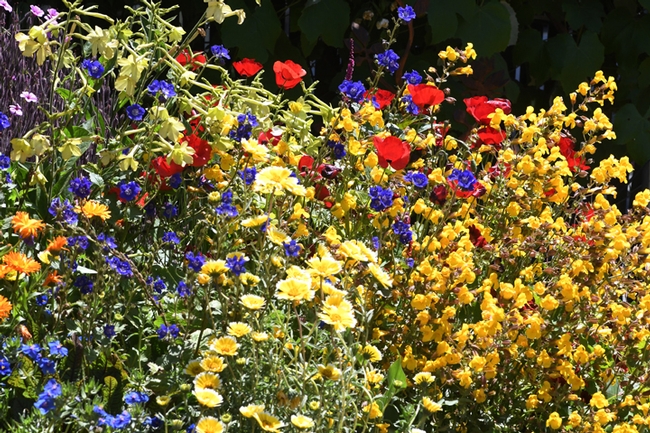
Colorful BOG garden in the early spring: among the flowers are tidy tips, desert bell, and European red flax. (Photo by Kathy Keatley Garvey)
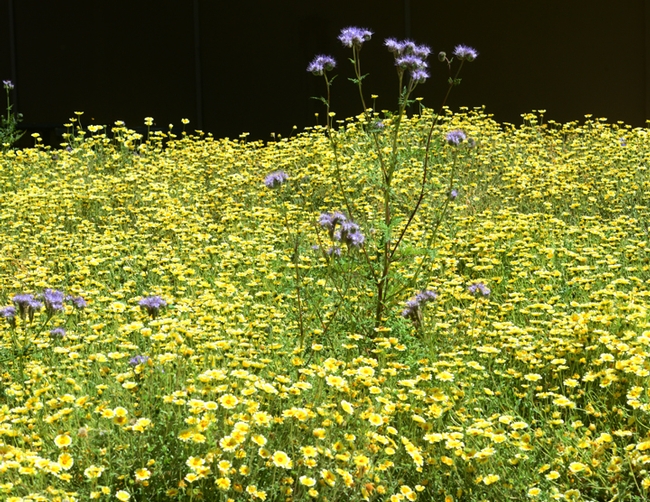
A mini-meadow of tidy tips, Layia platyglossa, with tall phacelia, Phacelia tanacetifolia. (Photo by Kathy Keatley Garvey)
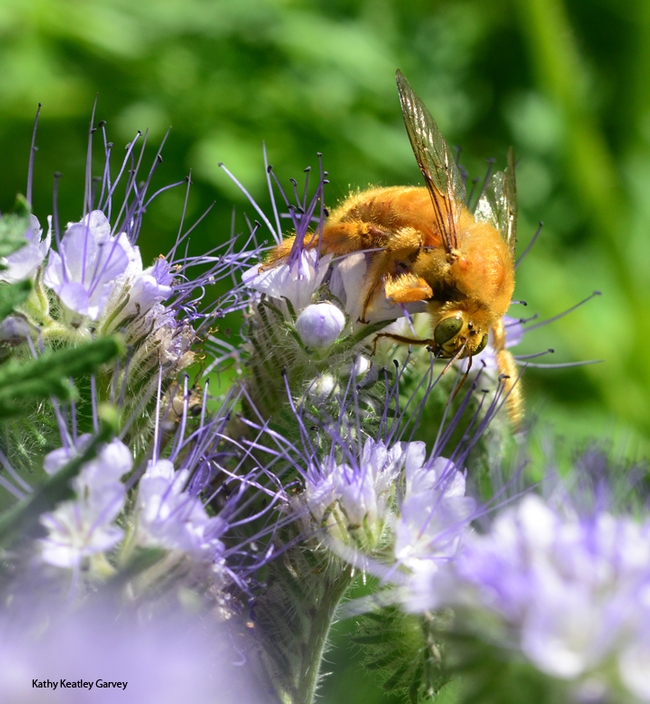
A male Valley carpenter bee, (Xylocopa varipuncta) forages on phacelia. (Photo by Kathy Keatley Garvey)
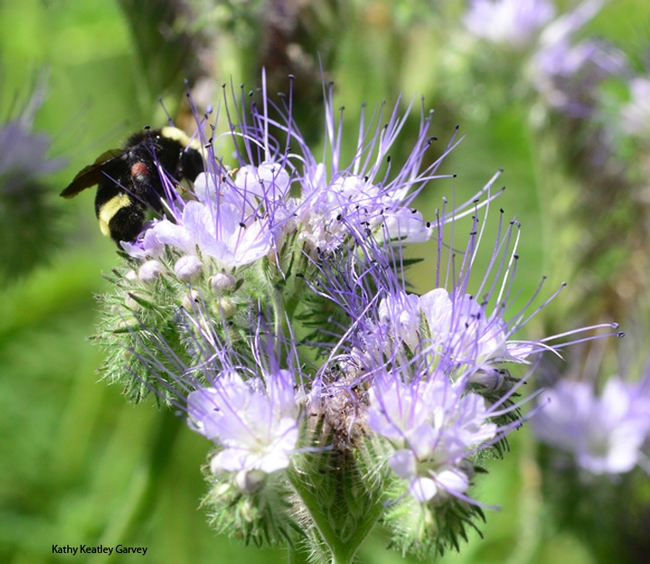
A yellow-faced bumble bee (Bombus vosnesenskii) sips nectar from phacelia. (Photo by Kathy Keatley Garvey)
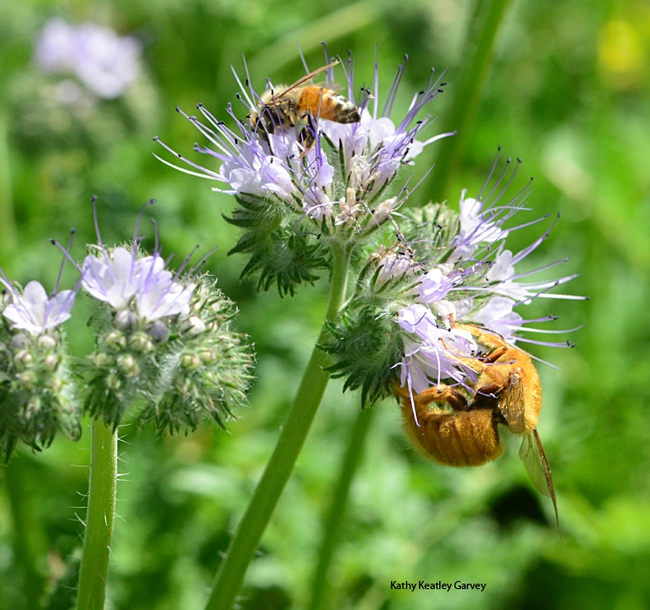
Size comparison! A honey bee is dwarfed by a male Valley carpenter bee, Xylocopa varipuncta. (Photo by Kathy Keatley Garvey)
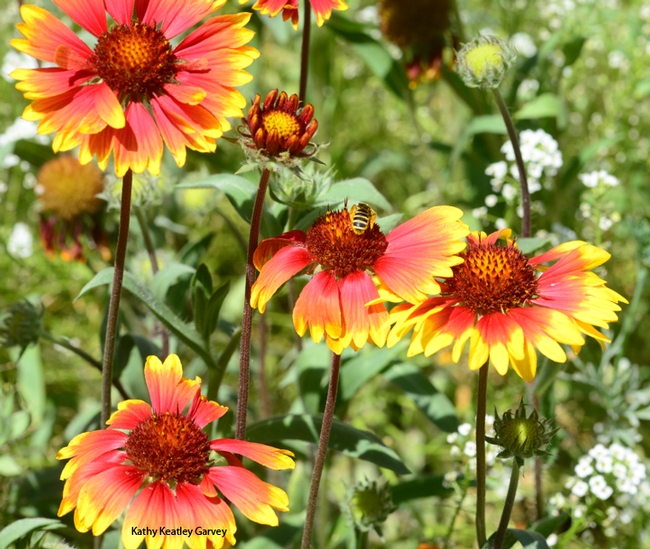
Many species of bees--as well as butterflies and other insects--are drawn to the blanketflower, Gaillardia. (Photo by Kathy Keatley Garvey)
UC Davis Bee Garden Open House on May 12
Did you celebrate National Public Gardens Day today (Friday, May 11)? Yes? It's always held the Friday before Mother's Day to promote awareness of...
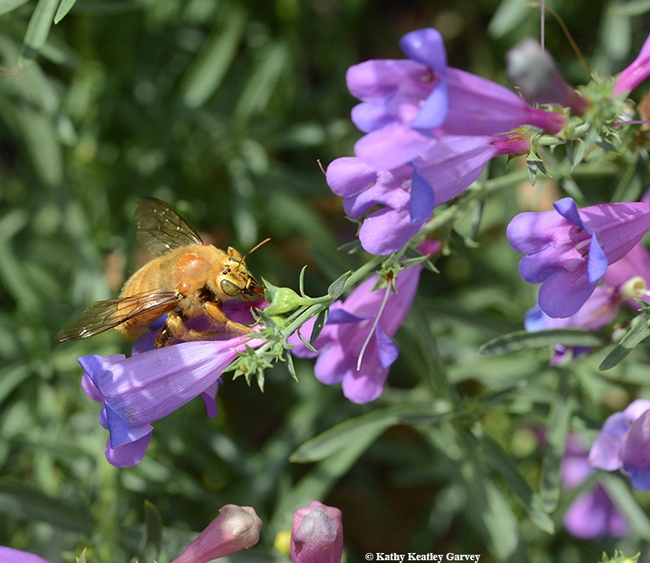
A male valley carpenter bee, Xylocopa varipuncta, nectaring on a California native, foothill penstomen, Penstemon heterophyllus. (Photo by Kathy Keatley Garvey)
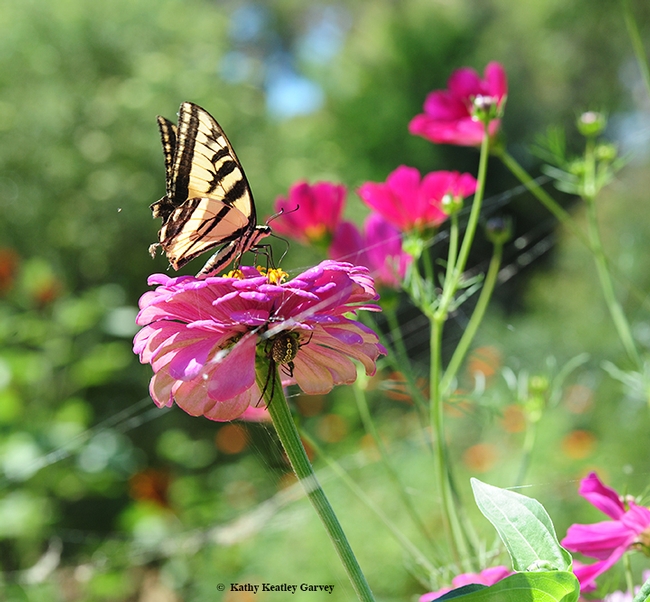
The Western tiger swallowtail, Papilio rutulus, is a frequent visitor to the Haagen-Dazs Honey Bee Haven. Note the spider lurking beneath the zinnia blossom. (Photo by Kathy Keatley Garvey)
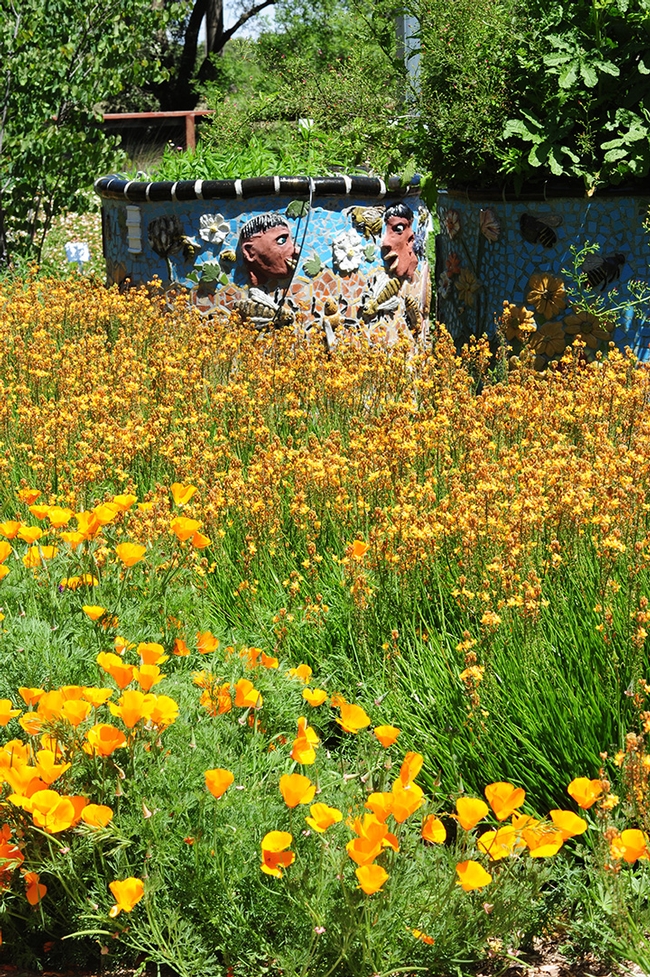
California golden poppies and bulbine brighten the Haagen-Dazs Honey Bee Haven, a half-acre bee garden on Bee Biology Road, west of the central UC Davis campus. (Photo by Kathy Keatley Garvey)
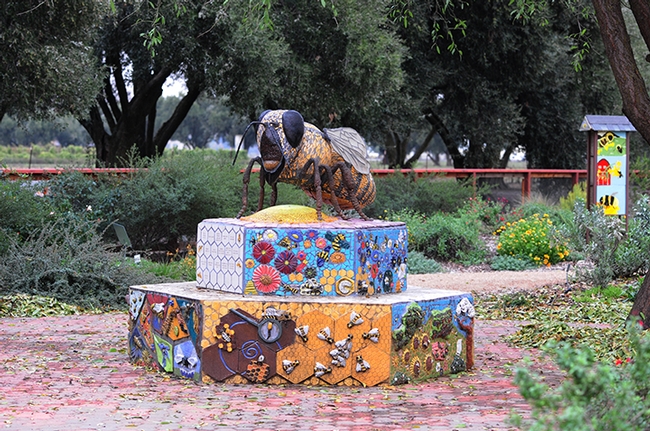
This is Miss Bee Haven, a mosaic-ceramic sculpture that anchors Haagen-Dazs Honey Bee Haven. It is the work of self-described "rock artist" Donna Billick of Davis. (Photo by Kathy Keatley Garvey)
Got Milkweed? Bees Like It, Too!
The Bohart Museum of Entomology at the University of California, Davis, stocks a "Got Milkweed?" t-shirt in its gift shop. In real life, insects...
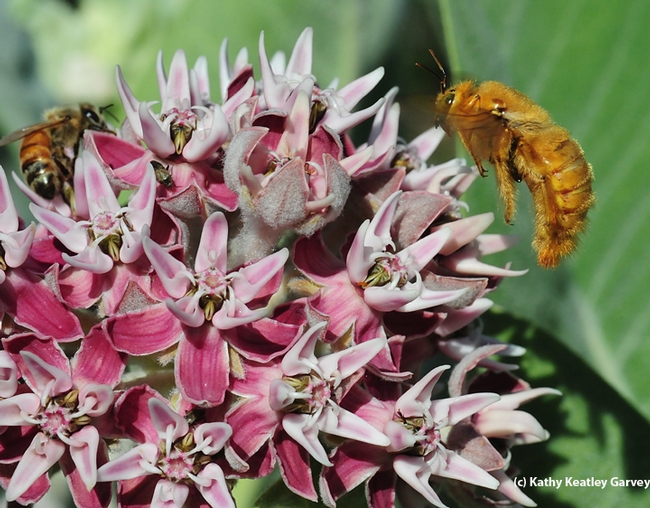
A male Valley carpenter bee, Xylocopa varipuncta (aka "teddy bear bee"), heads for the showy milkweed, Asclepias speciosa. A honey bee is already there. (Photo by Kathy Keatley Garvey)
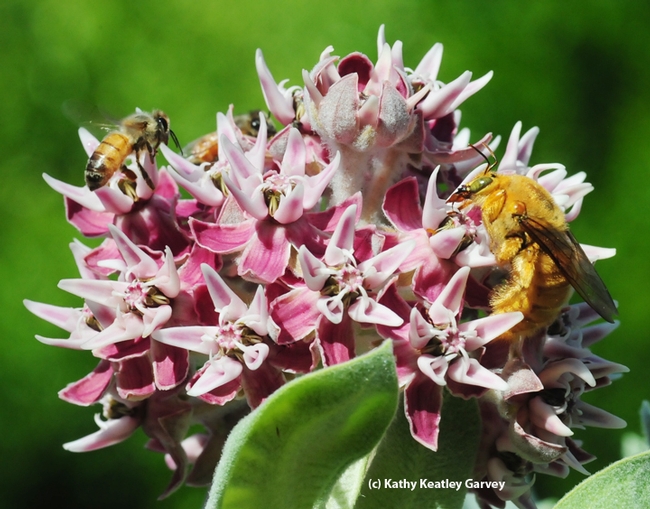
Three's a crowd? That's how many bees are on this milkweed. One carpenter bee and two honey bees. (Photo by Kathy Keatley Garvey)
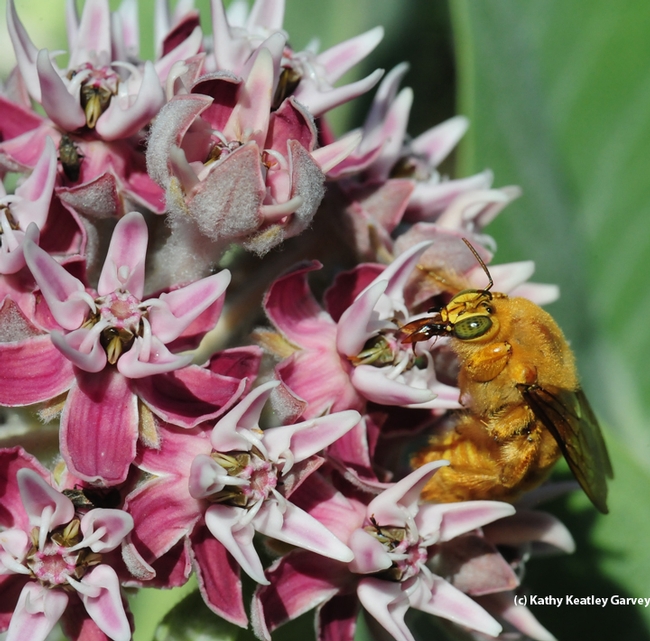
Close-up of the male Valley carpenter bee's tongue or proboscis. (Photo by Kathy Keatley Garvey)
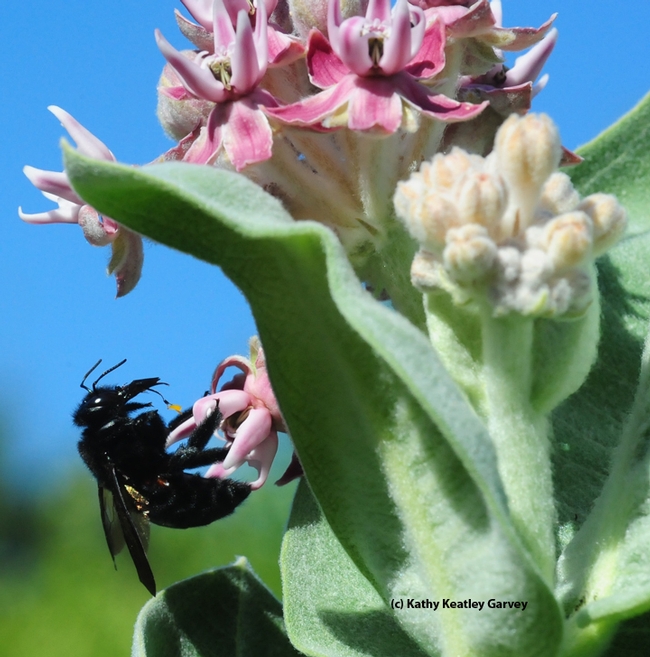
A female Valley carpenter bee arrives to take her share. The male of this species is a green-eyed blond (a clear case of of sexual dimorphism). (Photo by Kathy Keatley Garvey)

